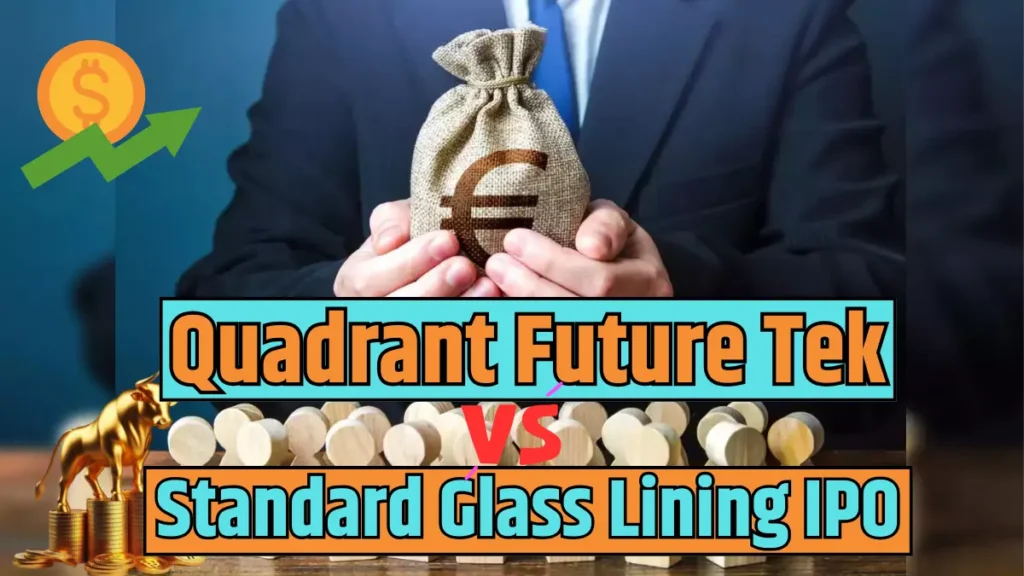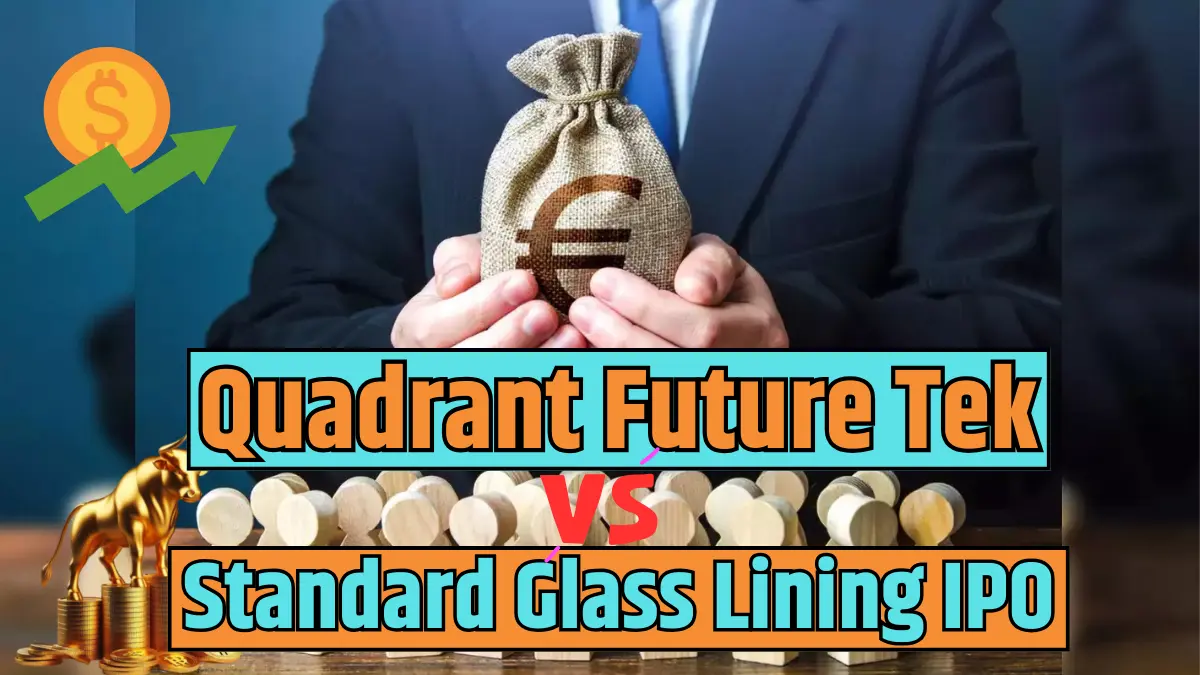Quadrant Future Tek vs. Standard Glass Lining IPO: Investing in IPOs can be an exciting yet challenging decision. This week, the spotlight is on two promising IPOs: Quadrant Future Tek and Standard Glass Lining. Both have generated buzz in the market, with updates on their Grey Market Premiums (GMP) and strong subscription numbers. Drawing from my experience as an investor, let me share insights about these IPOs and their potential impact on your portfolio.
Quadrant Future Tek vs. Standard Glass Lining IPO

Also Read :Parmeshwar Metal Limited | SME IPO Final Update
Quadrant Future Tek IPO
This IPO, launched today, is small in size but has caught the attention of many retail and institutional investors. Here’s why:
Key Details
- Issue Size: ₹290 crore
- Market Cap: ₹1160 crore
- Price-to-Earnings Ratio (P/E): 15
- Listing Date: 14 January 2025
When I first read about Quadrant Future Tek, its valuation raised my curiosity. It wasn’t cheap compared to its listed peers, but the story took a turn when the Anchor Book allocations were announced. Four major mutual funds, including LIC and Kotak, participated, increasing confidence in this IPO.
Also Read : Capital Infra Trust InvIT IPO Review: Should You Apply or Skip?
Grey Market Premium Update
Initially, the GMP was moderate, but as the subscription window opened, it climbed to ₹70. This hints at a potential listing gain of ₹1000 for retail investors. High Net Worth Individuals (HNIs) expect profits of up to ₹10,000. From my experience, a high GMP is often a good indicator of demand, but it’s not the only factor to consider.
Subscription Details
On the first day:
- Retail Category: Subscribed 20 times
- HNI Category: Subscribed 6 times by 3:30 PM
Such strong numbers reflect investor optimism. I remember applying for an IPO last year with similar figures, and it turned out to be a rewarding decision. However, always allocate funds wisely.
Personal Reflection on Quadrant Future Tek
I recall a similar IPO a few years ago. It had solid fundamentals but was overshadowed by skepticism about its valuation. Surprisingly, it delivered exceptional listing gains, much like what Quadrant Future Tek might offer. If you’re considering applying, ensure your finances are in order and apply across family accounts to maximize your chances of allotment.
Standard Glass Lining IPO
This IPO, launched two days ago, has been equally intriguing. With its robust valuation and strong GMP, it’s no wonder investors are showing keen interest.
Key Details
- Issue Size: ₹410 crore
- Offer for Sale (OFS): ₹200 crore
- Fresh Issue: ₹210 crore
- GMP: ₹66
Subscription Updates
By the second day (3:30 PM):
- Retail Category: Subscribed 31 times
- HNI Category: Subscribed 67 times
Anchor Investors
Big names like Motilal Oswal, Kotak Mutual Fund, and ITI Funds have shown trust in this IPO, adding to its credibility. From my perspective, such allocations often indicate a promising IPO, as institutional investors perform rigorous checks before committing.
Profit Expectations
Retail investors expect gains of up to ₹7600, while HNIs anticipate over ₹1 lakh. These numbers remind me of a time when I invested in a similar-sized IPO. The profits were real, but patience played a crucial role in navigating the volatility.
Tips for Allocating Funds
Based on my experience:
- Apply in the retail category for each family member with a Demat account. This increases your chances of allotment. If you don’t have an account yet, consider opening one—many platforms offer free account setups.
- If you have additional funds, focus on the HNI category. It offers better returns but requires higher investments.
In one of my earlier investments, I had limited funds and missed the HNI opportunity. Later, I realized the higher returns in this category could have significantly boosted my portfolio.
Market Expectations for Tomorrow
Switching gears to broader market insights, the Nifty has been trading in a tight range. Today’s inside candle pattern suggests that tomorrow’s market could break out in either direction. For context:
- If the market moves above 24,200, it signals bullish momentum.
- If it breaks below 23,200, a bearish trend is likely.
I’ve witnessed similar patterns before. One example was during November last year when an inside candle predicted a significant market move. By marking the high and low points of the candle, I managed to capture profitable trades.
Understanding Inside Candles
An inside candle forms when the day’s price action is entirely within the range of the previous day’s candle. It’s a signal of market indecision. Here’s how you can trade it:
- Bullish Scenario: If the price breaks above the inside candle’s high, take a long position with the low as your stop loss.
- Bearish Scenario: If the price breaks below the inside candle’s low, take a short position with the high as your stop loss.
Example from the Past
Last year, I noticed an inside candle on the Bank Nifty chart. The price broke above the high, confirming a bullish trade. With a 1:2 risk-to-reward ratio, I exited with solid gains before the stop loss was hit.
Bank Nifty Insights
Tomorrow’s Bank Nifty levels to watch:
- Support: 50,500
- Resistance: 49,997
If the price breaks below support, expect a significant breakdown. Similarly, a move above resistance could trigger a bullish rally.
Final Thoughts Quadrant Future Tek vs. Standard Glass Lining IPO
Both Quadrant Future Tek and Standard Glass Lining IPOs offer unique opportunities for listing gains. As an investor, it’s crucial to balance optimism with caution. Remember to diversify your investments and never allocate funds beyond your risk tolerance.
I hope these insights help you make informed decisions. Share your thoughts in the comments—will Nifty break 23,200, or will it climb past 24,200 first? Let’s discuss and learn together.











Leave a Reply